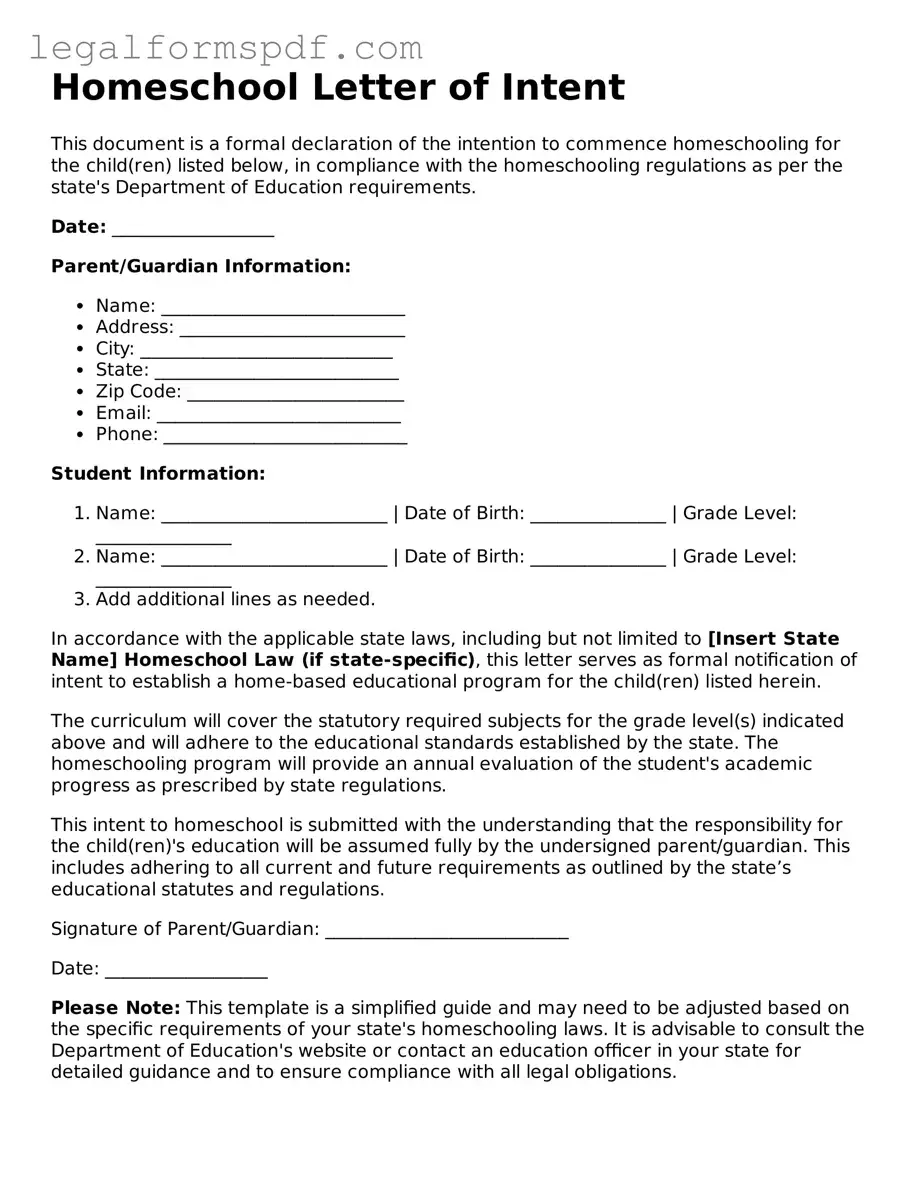Homeschool Letter of Intent
This document is a formal declaration of the intention to commence homeschooling for the child(ren) listed below, in compliance with the homeschooling regulations as per the state's Department of Education requirements.
Date: __________________
Parent/Guardian Information:
- Name: ___________________________
- Address: _________________________
- City: ____________________________
- State: ___________________________
- Zip Code: ________________________
- Email: ___________________________
- Phone: ___________________________
Student Information:
- Name: _________________________ | Date of Birth: _______________ | Grade Level: _______________
- Name: _________________________ | Date of Birth: _______________ | Grade Level: _______________
- Add additional lines as needed.
In accordance with the applicable state laws, including but not limited to [Insert State Name] Homeschool Law (if state-specific), this letter serves as formal notification of intent to establish a home-based educational program for the child(ren) listed herein.
The curriculum will cover the statutory required subjects for the grade level(s) indicated above and will adhere to the educational standards established by the state. The homeschooling program will provide an annual evaluation of the student's academic progress as prescribed by state regulations.
This intent to homeschool is submitted with the understanding that the responsibility for the child(ren)'s education will be assumed fully by the undersigned parent/guardian. This includes adhering to all current and future requirements as outlined by the state’s educational statutes and regulations.
Signature of Parent/Guardian: ___________________________
Date: __________________
Please Note: This template is a simplified guide and may need to be adjusted based on the specific requirements of your state's homeschooling laws. It is advisable to consult the Department of Education's website or contact an education officer in your state for detailed guidance and to ensure compliance with all legal obligations.
